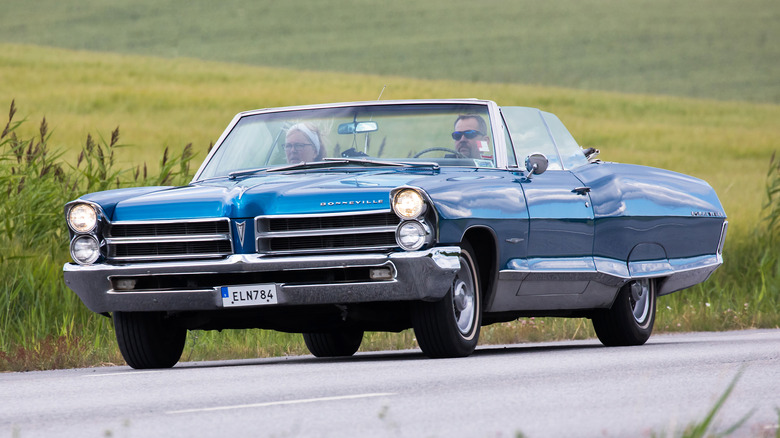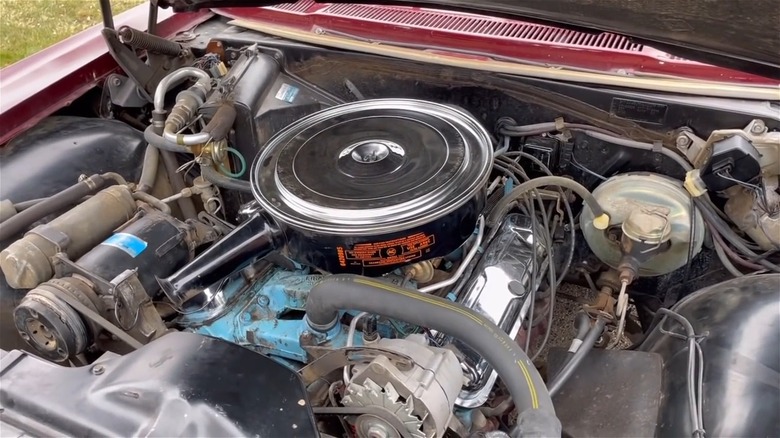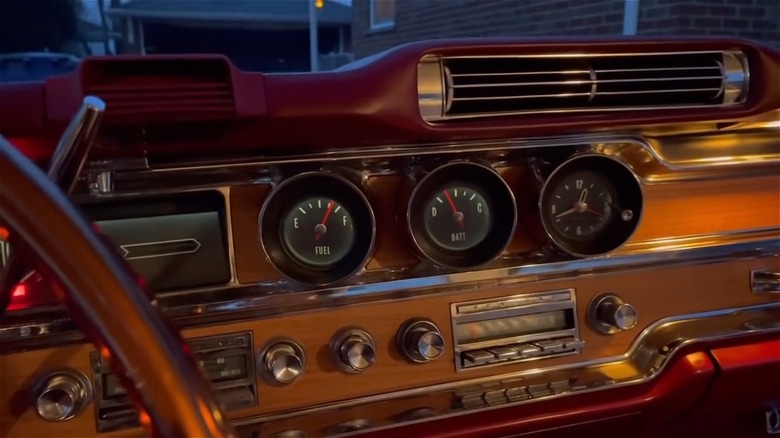What Engine Was In The 1965 Pontiac Bonneville & Was It Considered A Luxury Car?
The Pontiac Bonneville spanned 10 generations and was anything but predictable. It was first unveiled as a sporty concept car in 1954 with the Bonneville Special. Named for the famous salt flats in Utah, an ideal location for setting speed records, the inaugural and now iconic 1957 Pontiac Bonneville launched as a premium and robust limited-edition convertible.
Pontiac, seeing the success of Chevy's Corvette, wanted to introduce their own take on the two-seat sports car. In fact, the 1958 Bonneville saved Pontiac from Chevrolet with its potent performance capability. Although, unlike other vehicle models that remained content to stay within the confines of their initial genre, the Bonneville morphed into a hardtop coup and then again into the most luxurious model the auto brand offered, complete with many variations of a 389-cubic inch and 421-cubin inch V8.
With a range of different Bonneville models available, by 1965 you could get two- and four-door hardtops, a two-door convertible, and even a four-door station wagon. With features like an optional cutting-edge automatic temperature-control A/C, included wood trim across the dashboard, and a convenient power steering system, the '65 Bonneville was premium inside and out. According to OldRide.com, there were a total of 134,633 Bonneville's produced in 1965.
Bonneville's surplus of V8 options
The 389-cubic inch V8 found in the 1965 Pontiac Bonneville differed depending on which carburetor was included, and performance output also hinged on which transmission was used. For example, a manual Bonneville with a four-barrel carburetor could generate over 330 horsepower with a hefty 429 lb-ft of torque. However, if you opted for the Turbo Hydra-Matic automatic configuration, also with a four-barrel carburetor, you could expect a few less horses at 325, but equal amounts of torque to the manual.
There was also a 389-cubic inch engine with only a two-barrel carburetor, which kneecapped performance, reducing both the compression ratio and horsepower dramatically. Instead of well over 300 horsepower, the budget Bonneville V8 could only muster 256 and was only offered with an automatic transmission.
After a reconfiguration to Pontiac's small-block V8, the Bonneville could tack on three two-barrel carburetors instead of just one (referred to as Tri-Power), bumping output up to 338 horsepower and 433 lb-ft of torque for an extra upgrade cost. But even more impressive was the option for three different and larger 421-cubic inch V8s for the Bonneville, which were the same options available for the 1965 Pontiac Catalina 2+2. You could opt for the four-barrel carburetor, the Tri-Power, or the high-output variant which included headers for enhanced performance. The four-barrel could make 338 horsepower, the Tri-Power jumped to 356, and the high-output engine placed Bonneville well into muscle car territory with 376 horsepower.
High-class amenities elevate the Bonneville
The interior of the mid-60s Bonneville was described by MotorTrend at the time as "extra-elegant" and "the longest, heaviest, most elegant series of the line," with options like genuine leather interiors. The bench seating was reported to be exceedingly ergonomic with plenty of space to move around unencumbered. Bonneville also offered an adjustable steering wheel, with seven settings to accommodate driver comfort, which was considered a luxurious feature at the time.
One of the standout amenities of the 1965 Bonneville was the new air conditioning system that made temperature regulation much simpler. The automatic temperature-control A/C allowed drivers to input the desired setting, and the system would maintain temperature automatically once engaged, which was described as a "set it and forget it" experience.
Among other upscale aspects of Pontiac's car, the ride is refined, with reviewers touting Bonneville as "an extremely pleasant long-distance cruiser equally at home on the freeway or on short hauls to the country club." The shifting from the Turbo Hydra-Matic proved to be problematic for some drivers, not because it was too stiff or unresponsive, but instead some complained it felt too polished. A vintage 1965 ad for the Bonneville summed up the car best with the line, "Any car that is this responsive, obedient and satisfying to drive simply has no right to be this good looking."


